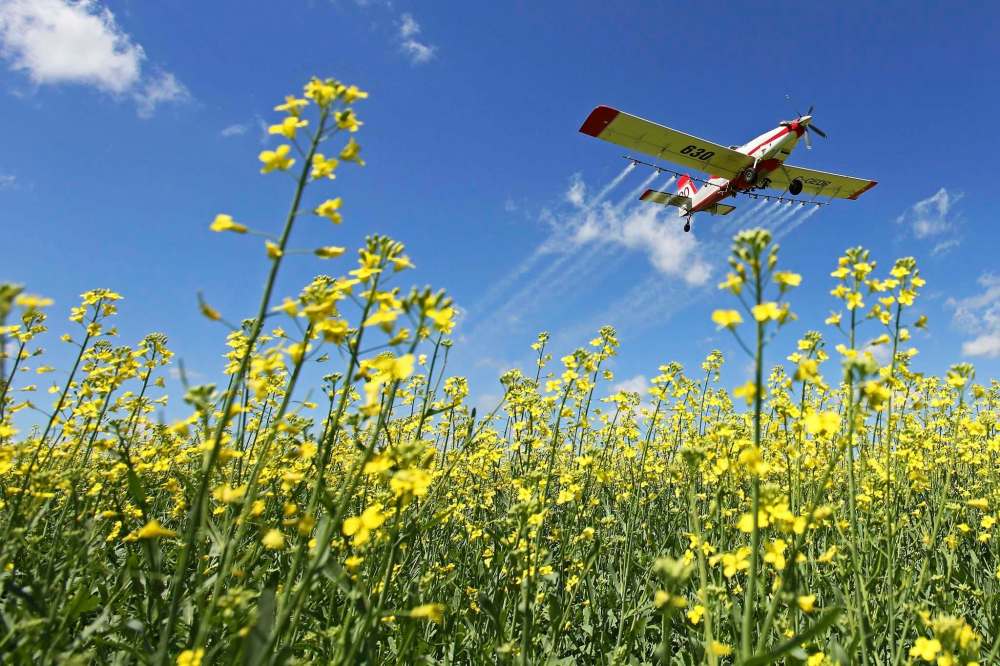‘Fair amount of uncertainty’ in Prairies’ future: report
Advertisement
Read this article for free:
or
Already have an account? Log in here »
To continue reading, please subscribe:
Monthly Digital Subscription
$1 per week for 24 weeks*
- Enjoy unlimited reading on winnipegfreepress.com
- Read the E-Edition, our digital replica newspaper
- Access News Break, our award-winning app
- Play interactive puzzles
*Billed as $4.00 plus GST every four weeks. After 24 weeks, price increases to the regular rate of $19.00 plus GST every four weeks. Offer available to new and qualified returning subscribers only. Cancel any time.
Monthly Digital Subscription
$4.75/week*
- Enjoy unlimited reading on winnipegfreepress.com
- Read the E-Edition, our digital replica newspaper
- Access News Break, our award-winning app
- Play interactive puzzles
*Billed as $19 plus GST every four weeks. Cancel any time.
To continue reading, please subscribe:
Add Free Press access to your Brandon Sun subscription for only an additional
$1 for the first 4 weeks*
*Your next subscription payment will increase by $1.00 and you will be charged $16.99 plus GST for four weeks. After four weeks, your payment will increase to $23.99 plus GST every four weeks.
Read unlimited articles for free today:
or
Already have an account? Log in here »
Hey there, time traveller!
This article was published 29/06/2021 (1566 days ago), so information in it may no longer be current.
OTTAWA — Manitobans could see a farming boom thanks to global warming, but their quality of life and pocketbooks will likely take a hit as natural disasters become more common, according to a new federal report.
“What we’re seeing is this flipping back between drought and flood, a lot more frequently,” said Al Pietroniro, a water scientist with Natural Resources Canada.
“There’s a fair amount of uncertainty when we’re looking at the Prairies and what the future might hold.”

Pietroniro contributed to a 700-page report summarizing academic research, media reports and case studies on how well-prepared Canada is for climate change — which found a lot lacking.
Among the few positives is longer Prairie growing seasons and more farmable land.
“The economic consequences of climate change for agriculture in Canada could be positive and potentially significant — even by the 2080s — and especially for the Prairie provinces,” reads the report.
It cites a handful of studies that estimated farmers in Manitoba could see a boost in revenue, though the average person could still be worse off due to price changes and the impact of global trade, resulting in less buying power.
For example, one analysis found the size of Manitoba’s economy could jump by 1.3 per cent GDP in 45 years due to more agriculture, while resulting in a 0.1 per cent drop in consumers’ purchasing power.
The forecast of abundant harvests is also tempered by the increasing risk in “more frequent drought, particularly in the southern Prairies and interior of British Columbia; extreme rainfall contributing to floods; and additional occurrences of harmful algae blooms,” such as on Lake Winnipeg.
Researchers say this is in part caused by “the lack of co-ordination between the various agencies” in the three Prairie provinces, “resulting in a duplication of efforts, siloed expertise and gaps in responsibilities.”
Meanwhile, a large swath of Manitoba is vulnerable to frequent forest fires, from a narrow stretch east of Winnipeg to most of the area north of Riding Mountain National Park. Wildfires in those areas are currently predicted to occur every 100 to 199 years, but 2070 will likely have wildfires return less than 49 years after the last one, according to a 2014 analysis Monday’s report highlights.
The scientists tried to touch on intangible impacts, such as Indigenous peoples having to change cultural practices or rural communities where families have “a strong heritage associated with farming and daily personal interactions with their land.”
It cites a handful of tourist market surveys taken between 2007 and 2019 that found many travellers visit the northern Manitoba town of Churchill out of a fear polar bears will soon be less bountiful.
The report notes steps already being taken, such as the re-establishment of a federal body that aims to co-ordinate water policy across the Prairies. Individual communities are trying to get ahead of these risks, such as Churchill expanding its tourism options beyond polar bears, and trying to establish more medical services in the town.
The report notes Prairie provinces are already used to “extreme climate variability” and have adapted over the decades through means such as irrigation and crop diversification.
Pietroniro, who leads the National Hydrology Research Centre in Saskatoon, said Manitobans will have to rely on adaptability to make the most of the coming decades.
“We already live in an extreme environment here,” he said, adding better monitoring could mean better planning for irregular weather, instead of just responding to it. “It’s a bit more of the same in terms of how we’ve always dealt with adaptation in the Prairies.”
The report also noted industry lacks a co-ordinated approach from Ottawa on how to adapt to climate change.
Unlike other countries, it’s often up to individual Canadian firms to change their practices, which often involves planning for disruptions in supply chains or delays in construction.
Some federal stipends help with this planning but there’s no coherent strategy to encourage whole industries to prepare their operations and employees for the changing climate.
“Despite growing awareness of climate change impacts, there is no widespread evidence of corporate adaptation in Canada. When adaptation does occur, it tends to focus on short-term actions to address physical risks,” the report reads.
“Increased involvement of the private sector would accelerate adaptation in Canada as a whole.”
dylan.robertson@freepress.mb.ca
History
Updated on Tuesday, June 29, 2021 6:31 AM CDT: Adds photo
Updated on Tuesday, June 29, 2021 6:53 AM CDT: Fixes typo






